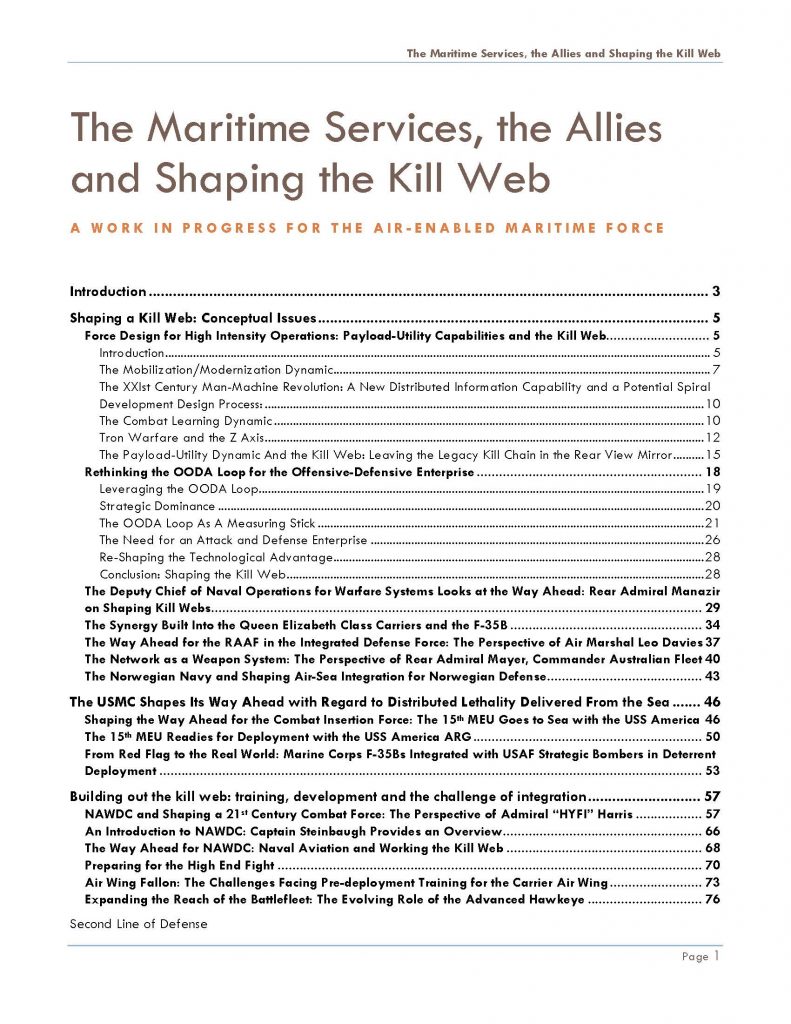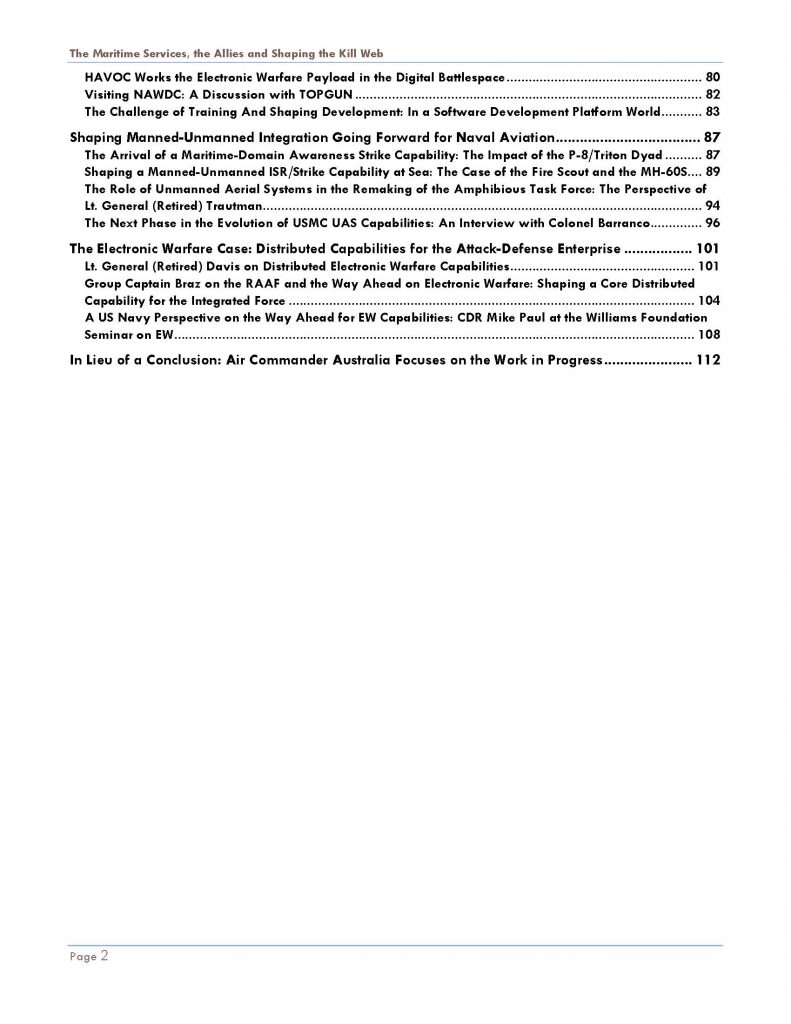This special report looks at the emergence of the kill web from the perspective of the maritime and air forces.
Airpower and naval power emerged from World War II as integrated components able to fight in a single battlespace.
For the navies, carrier aviation was the key element for air enablement along with land based air which could operate from key land based choke points to provide for key capabilities to assist in controlling the sea lines of communication.
With the emergence of fifth generation aviation, the manned-unmanned dynamic and the evolution of weapons, a new version of operating in the integrated battlespace is emerging.
The US Navy refers to this as the kill web, a capability to move from a linear kill chain to a distributed fleet able to tap into capabilities available throughout an integrated force.
This is an aspiration more than the current reality, but the US and its core allies are working hard to move aspiration to reality.
We first look at some conceptual issues in terms of how to characterize the way ahead for the fleet as it integrates with land and sea based capabilities to deliver its combat effect.
We next look at the emergence of key elements of the kill web entering service with today’s US Navy, USMC, the RAF and the Royal Navy, and the RAAF and the Royal Australian Navy.
Our visits to FALLON, MAWTS-1, to the UK and to Australia provided several data points on how the U.S. and core allies are working on building out a kill web air enabled force.
We then look at the significant opportunities, which new training and development integration can provide to shape a more integrated force able to execute a kill web going forward.
Finally, we then address two case studies of the way ahead: working the unmanned-manned transition and the electronic warfare or the non-kinetic payload domain.
And we conclude with some thoughts from the newly appointed Air Commander Australia on the challenge of shaping an effective 21st century combat force.



